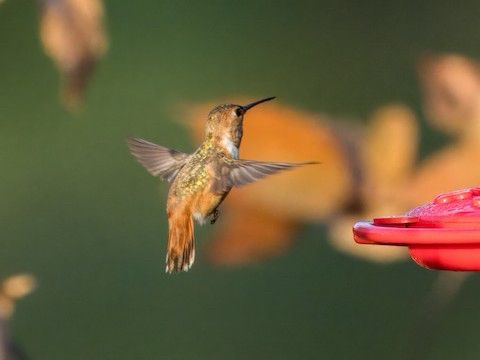
Next Monday @riceuniversity.bsky.social we have a panel discussion on the geopolitics of critical minerals for the energy transition. Geology does not distribute natural resources fairly. This leads to a complex web of trade and geopolitical tensions.
events.rice.edu/event/415347...
02.12.2025 16:27 — 👍 13 🔁 4 💬 0 📌 0

Basaltic dike crosscutting Precambrian granites and arc cumulates. Arabian Shield on the flank of the Red Sea, Saudi Arabia.
26.11.2025 14:03 — 👍 19 🔁 0 💬 1 📌 0

A Western Willet flying over me. In the fall, the Eastern Willets along the coast fly south to their wintering grounds and are replaced by Western Willets returning from the north. Willets are here year round, but the two species trade places every season. And yes, they are different species.
26.11.2025 13:13 — 👍 12 🔁 1 💬 0 📌 0

We r having a panel discussion on critical minerals Dec 8 @riceuniversity.bsky.social in conjunction with the French Consulate of Houston.
26.11.2025 01:18 — 👍 4 🔁 4 💬 0 📌 0
indeed, one needs a whole team of people to correct AI outputs! maybe that's how AI will create jobs. LOL
19.11.2025 00:36 — 👍 2 🔁 1 💬 0 📌 0
AI, whether we like it or not, is here to stay. And that scares me. How do we ensure that the next generation actually learns how to think if AI is too easy to access? It's already happening at the universities...
19.11.2025 00:17 — 👍 1 🔁 1 💬 0 📌 0
agree 100%... I am seeing so many scientists using it, so I got curious. AI is a great way to become an idiot.
19.11.2025 00:10 — 👍 1 🔁 0 💬 1 📌 0
AI is great for speeding certain processes up. It's a good tool for those who already have decades of domain expertise. But the race to bring AI into our world is sure to produce the most uncreative and unimaginative generation in the history of human evolution.
19.11.2025 00:07 — 👍 17 🔁 5 💬 2 📌 0

After seemingly disappearing for 5 days, our Allen's Hummingbird @riceuniversity in Houston, TX has returned. Where did to go to all this time?
18.11.2025 04:55 — 👍 13 🔁 1 💬 0 📌 0
I think it's useful for most math and facts. It's also useful for jogging one's memory or perhaps providing some rudimentary direction, but it's most useful for someone with deep domain knowledge. It is dangerous for someone who is not strong in fundamentals.
18.11.2025 03:59 — 👍 4 🔁 1 💬 2 📌 0
Update: well, not surprisingly, nobody can agree on this bird. We will relegate this bird to the dustbins of American Herring/Vega.
18.11.2025 03:56 — 👍 2 🔁 0 💬 0 📌 0
AI is a tool, often useful, but I am seeing many begin to rely on AI for their research, writing papers, ideation, etc. This is a very dangerous path we are embarking on.
18.11.2025 03:55 — 👍 10 🔁 1 💬 1 📌 0

so I've been playing around with AI (GPT), asking it how Pt-bearing sulfide layers form in layered intrusions. I asked critical questions, prompted it to think about physics, and after many iterations, it came up with this model. Utter nonsense, violating physics! Be very careful of AI.
18.11.2025 03:55 — 👍 16 🔁 4 💬 5 📌 1
Sure go ahead
14.11.2025 18:34 — 👍 1 🔁 0 💬 0 📌 0


Another Allen’s Hummingbird @riceuniversity.bsky.social in Houston. Amazing we’ve now had two. Our garden is working!
13.11.2025 22:08 — 👍 11 🔁 1 💬 0 📌 0
Wow not bad. I tend to underestimate
13.11.2025 16:59 — 👍 1 🔁 0 💬 0 📌 0

I need help! Scaly-breasted Munias. How many birds in this photo? Trying to estimate how many birds we have, but they keep moving around. Curious how much variance there might be between observers. So first, give me your quick estimate and then count them carefully. How do your numbers compare?
13.11.2025 16:48 — 👍 8 🔁 2 💬 11 📌 0


Billion year old shallow water stromatolitic carbonates contact metamorphosed. Green layers with diopside and occasional grossular garnet. Sedimentary layers are preserved, including ripples! Franklin Mountains, El Paso, Texas.
13.11.2025 14:28 — 👍 70 🔁 17 💬 3 📌 1

A view of the mid-Tertiary andesitic porphyry of Cristo Rey in El Paso, straddling the Mexican-US border. The laccolith intruded into Cretaceous sediments, pushing them apart. @riceeeps.bsky.social @riceuniversity.bsky.social geology field trip to west texas
11.11.2025 04:20 — 👍 37 🔁 6 💬 0 📌 0


In search of pegmatites in the Precambrian Arabian shield. These dikes show the more fine-grained nature of the dike margins and the coarse-grained nature of the dike core due to differential cooling rates. Saudi Arabia.
07.11.2025 13:37 — 👍 13 🔁 1 💬 1 📌 0

And it continues. a winter wren in our urban little patch. One cannot restore urban spaces to their original state, but one can build a diversity of microhabitats that provide cover for migrating birds.
04.11.2025 15:48 — 👍 11 🔁 0 💬 0 📌 0

Birds, birds, birds. Showing Christian Cooper the birds of Houston Audubon’s Bolivar flats bird sanctuary on the upper Texas coast and learning from him how to tell stories.
24.10.2025 04:11 — 👍 2 🔁 0 💬 0 📌 0

Cedar waxwings are not here yet. But I’m waiting for them. When they come, I know it’s winter. Pen and ink.
23.10.2025 02:01 — 👍 17 🔁 0 💬 0 📌 0


800 Wood Storks flew over @riceuniversity.bsky.social at noon today. on their way back south to Mexico for the winter. A magical sight that happens every year, but largely unnoticed because they fly high.
22.10.2025 19:00 — 👍 18 🔁 2 💬 0 📌 0

A little rain in Texas would be nice. It’s been quite dry.
22.10.2025 03:28 — 👍 9 🔁 0 💬 1 📌 0
I have a few interesting bricks.
22.10.2025 02:27 — 👍 2 🔁 0 💬 0 📌 0
Professor, UC Irvine; Paleoclimate, speleothems, geochemistry, community-engagement, climate justice; #NativeinSTEM; she/her
Geomorphologist, dog lover, big fan of coffee.
I study how microbes 🦠 and mountains 🏔️ shape each other.
Helmholtz Global Fellow @GFZ Potsdam.
Paleontologist. Schoolteacher. Big galoot. Bespoke homemade opinions. (he/him)
Arthropod enthusiast, echino-curious.
Eamus Catuli, illegitimi non carborundum.
Associate Professor, Earth and Atmospheric Sciences at the University of Alberta. I like things that fly through the air (not shit hitting fan though), science, nature, pottery, and well, many things actually. Opinions are my own and probably questionable.
Professor, Ecologist, Conservationist, Ornithologist, RSPB Centre for Conservation Science & Centre for Biodiversity & Environment Research, University College London - #biodiversity #conservation #ornithology #stateofnature – birder - views my own
#birding #ecology #ornithology
Natural resource economist, geographer, meanderer, informed agitator, immigrant.
Trans rights are human rights.
💧Dall’acqua salata a quella dolce e zozza💧
My views are my own and do not represent my employer.
I don't consent to AI use of anything of mine.
Field geologist, US Antarctic Program investigator - West Antarctica, College professor, Proterozoic-lover, admirer of Iphigene Ochs. Favorite mineral: Cordierite. Best rock types: mylonite, kinzigite and diamictite! Favorite weather: blowing snow.
Ornithologist with a penchant for tropical forests, mountains, avian life-histories and most things in-between. NSF Postdoctoral Fellow @GeorgiaTech.
Kiwi volcanologist working on Ngāuruhoe (Mt Doom) in NZ, the 2021 La Palma/Tajogaite eruption impacts, seafloor geologic hazards I 'On Shaky Ground' writer
Volcano Scientist | Associate Prof @unibirmingham.bsky.social | Research Affiliate @cser.bsky.social | Co-founder @gvra.bsky.social | Geology | Environmental change and sustainability | Dad of 2 | First gen
Wandering and sometimes lost.
Earth scientist, professor, mom, living with disability, animal lover, amateur gardener, advocate for fixing lack of D.E.I. in science and academia. Only my thoughts
Hydrogels, immunotherapy, and rheology in the Appel Group at Stanford. engineer/musician/humanist. bluesky-ing from both sides of my brain.
Astronomer, birder, TTRPG player and gluten-free cook. he/him.
Graduate Research Fellow @unc-emes.bsky.social
Former PM @ https://www.iedadata.org/
Views are my own
neurobiologist, ornithologist, scruffy looking nerfherder, social distancing since 1974, currently at U Lethbridge, Treaty 7 lands
🇨🇦 🇦🇺 stuff
open access link for our book: https://direct.mit.edu/books/oa-monograph/6000/Bird-Brains-and-BehaviorA-Synthesis
Geologist, Geochemist (Early Earth, Crustal Evolution, Critical metals)
The Society of Mining Professors is an International Organization representing the global academic community of the minerals engineering disciplines. https://miningprofs.org



































